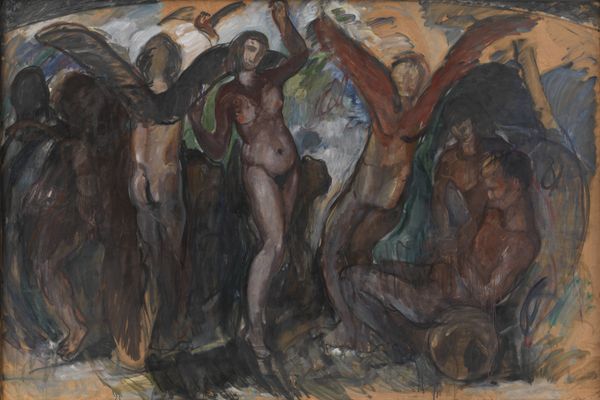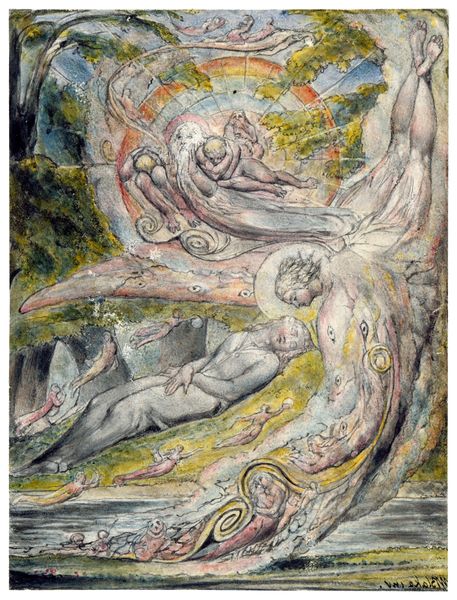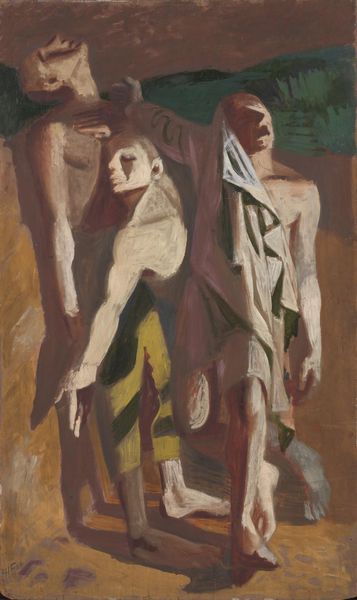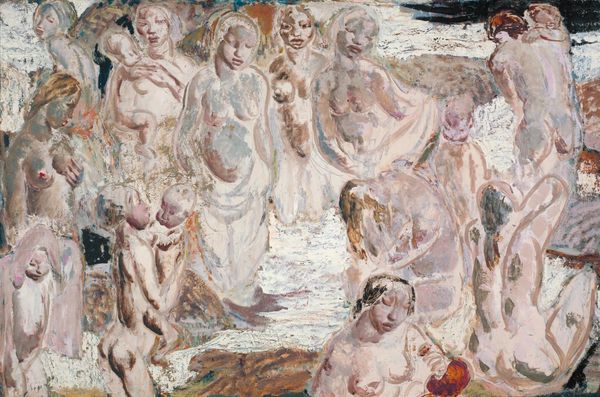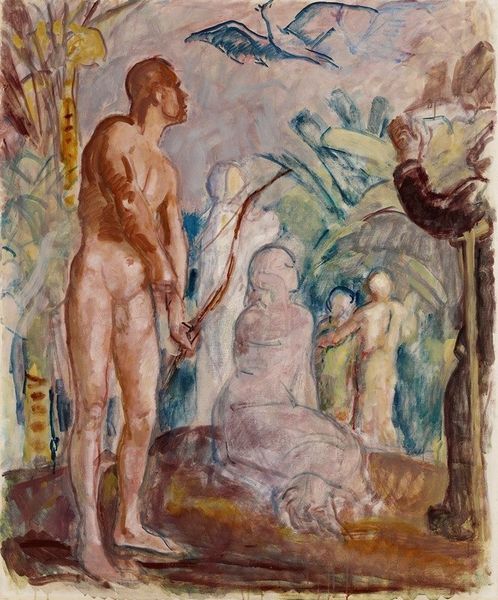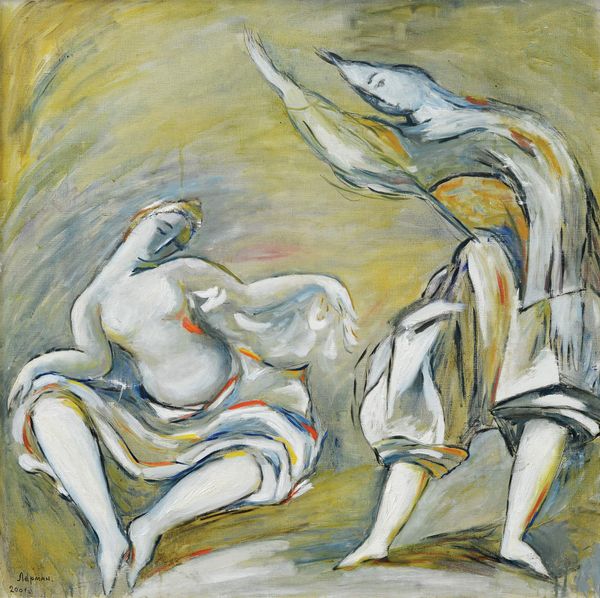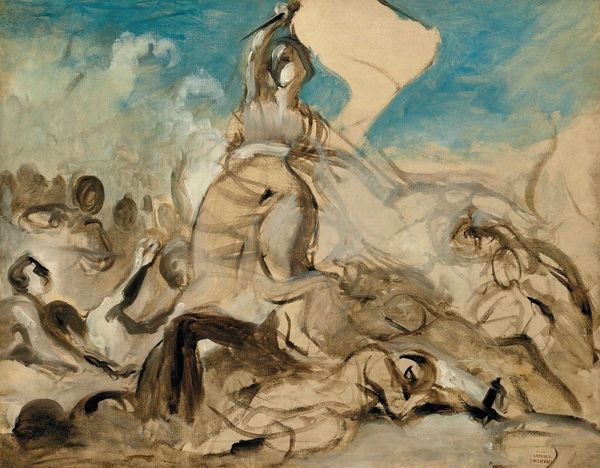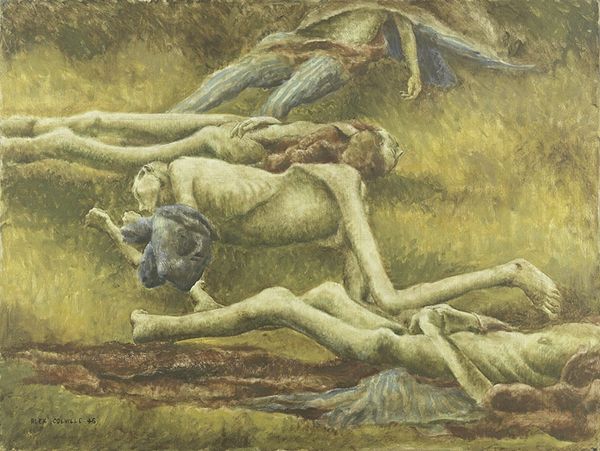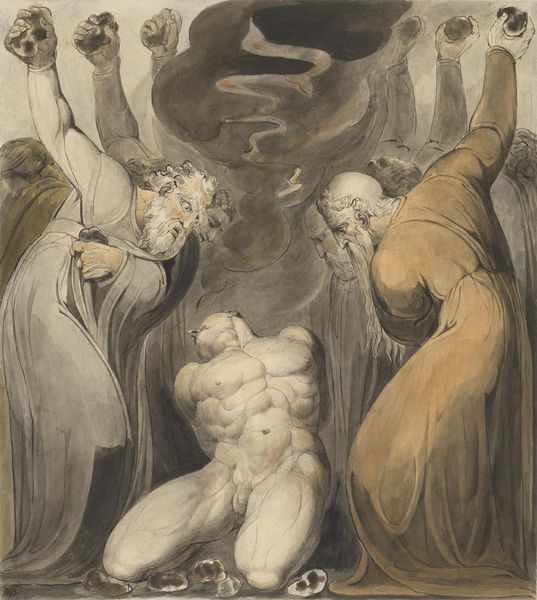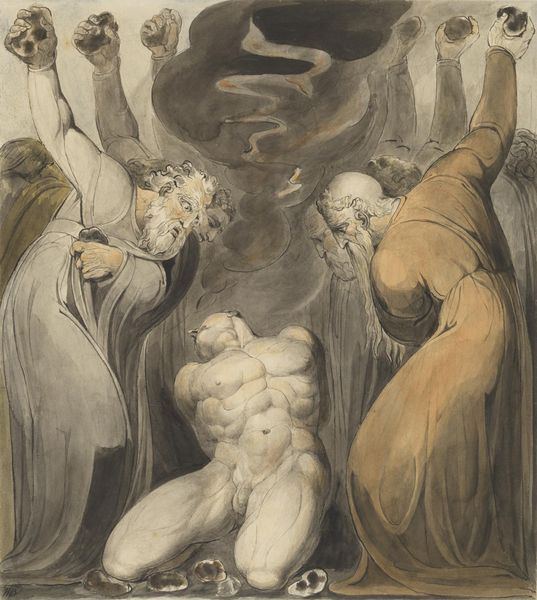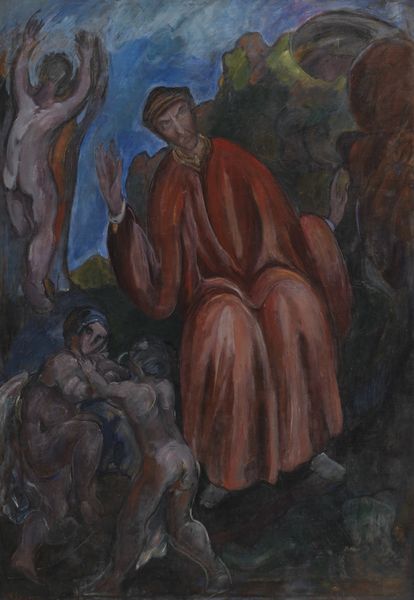
painting, oil-paint
#
painting
#
oil-paint
#
mannerism
#
figuration
#
oil painting
#
history-painting
#
nude
Copyright: Public Domain: Artvee
Curator: El Greco's oil on canvas, "The Vision of Saint John," completed sometime between 1608 and 1614, is quite a sight, isn’t it? Editor: Striking! The elongated figures, the stormy sky—it feels so urgent, so dramatically charged. It really draws you in with that feeling. Curator: Indeed. It's important to remember the painting was originally intended for the side altar of the Church of Saint John the Baptist in Toledo. El Greco was deeply engaged with Counter-Reformation spirituality. The piece depicts Saint John's apocalyptic vision, as described in the Book of Revelation. Editor: Seeing the nude figures certainly clashes with my expectations of religious art. It begs the question, who gets represented and how? I mean, even the draped figure on the left--who's that protecting *her* modesty while leaving others exposed? What social commentaries do those subtle draperies evoke regarding gender, power, and seeing or being seen? Curator: Exactly, El Greco broke from traditional representations. The nudes, though, signify souls rising. It echoes contemporary concerns surrounding spirituality at that moment within the cultural contexts of Spanish religious reform, exploring how physical and spiritual ascensions intersected. Editor: Yes, it speaks to the tensions of the time and the re-thinking of the Catholic tradition during its time and history. And it pushes past a literal representation, questioning rigid doctrines. Look at how figures strain upwards! There is a tension that it can easily collapse in on itself. I also noticed the composition defies typical conventions. There’s a vortex-like movement, leading the eye upwards toward the swirling clouds and cherubic figures. Curator: Absolutely. His use of color, the dramatic chiaroscuro...it creates an almost otherworldly feel, underscoring the visionary aspect of the scene and the sociopolitical pressures and visual restrictions on sacred representations Editor: It is a powerful piece. It reminds us how art engages both the spiritual and socio-cultural landscape that often intersect, forcing dialogue between both sides, and helping push society forward in discourse and thought. Curator: Precisely, thinking about it in these social constructs contextualizes why art's evolution allows space to explore complex intersections between piety, society and artistic freedom, like here with the depiction of salvation through nude bodies ascending, a really provocative move in that period.
Comments
No comments
Be the first to comment and join the conversation on the ultimate creative platform.
